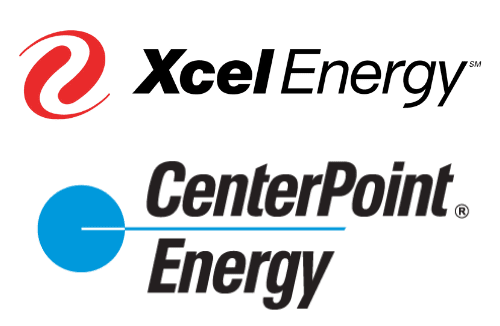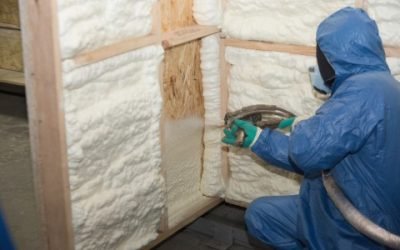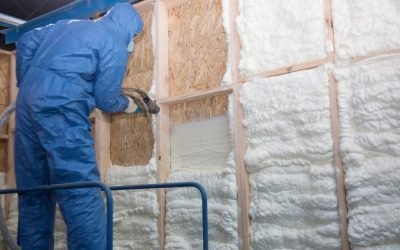Energy Efficiency Benefits of Spray Foam Insulation: Save Money and Reduce Environmental Impact
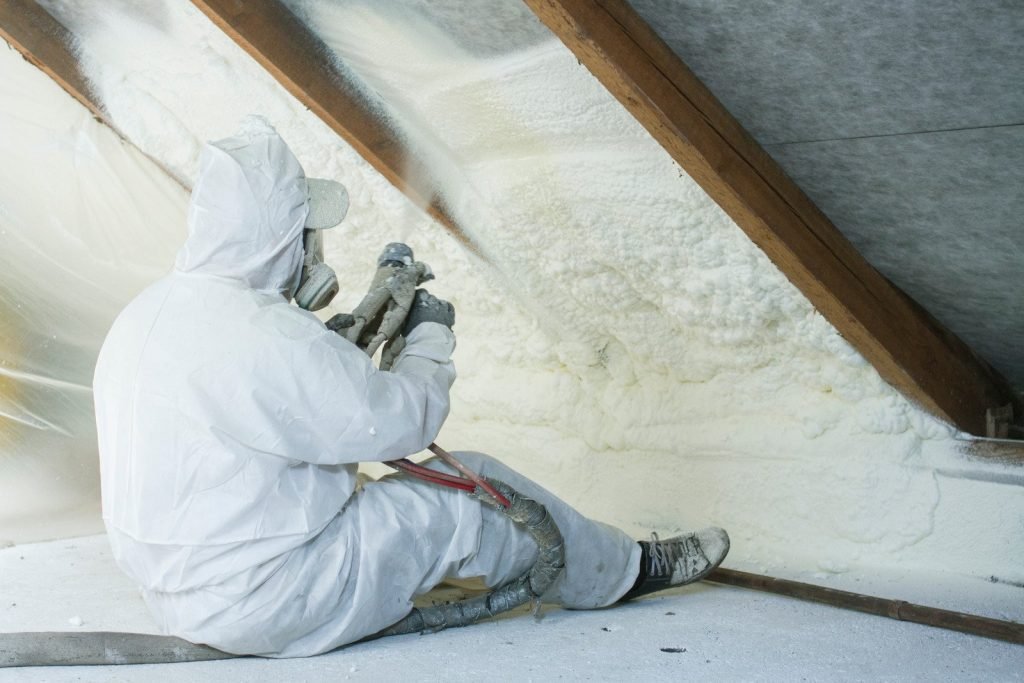
Last Updated on July 2, 2024 by Spray Foam Insulation Plus
Spray foam insulation tremendously boosts energy efficiency. Its high R-value ensures superior resistance to heat flow, which keeps indoor temperatures stable and reduces reliance on heating and cooling systems. Surprisingly, this leads not just to comfort but also substantial savings. Initial costs might seem steep, but in the long run, you could save an estimated 18% on Minnesota energy expenses (according to an Energy Star study). In some areas, utility companies even hand out rebates or tax cuts for installing this eco-friendly option. The shift to spray foam insulation is a wise investment. Its benefits reach far beyond just helping maintain a warm home when it’s snowing outside.
Spray foam insulation offers exceptional energy efficiency benefits by providing a continuous air barrier, reducing air leakage, and minimizing heat transfer. This results in lower energy bills, improved indoor comfort, and a reduced carbon footprint.
Spray Foam Insulation for Temperature Regulation
Spray foam insulation is like a snug blanket for your home—keeping the indoor temperature just right. It does this using something called R-value, which measures how well a material can resist heat flow. Because spray foam has a high R-value, it helps maintain consistent temperatures indoors, making it easier to keep your home warm in winter and cool in summer.
When it’s hot outside, spray foam insulation helps keep the cool air inside, stopping the heat from seeping in. When it’s cold outside, it helps keep the warmth inside, allowing you to spend less on heating. Think of it as wrapping your home in a warm coat in winter and giving it a sunhat in summer.
When your home is more comfortable to regulate temperature-wise, your heating and cooling systems don’t have to work as hard, reducing the amount of energy they use. This leads to savings on your energy bills and reduces your environmental impact by decreasing carbon emissions associated with excessive energy usage.
For instance, consider a case study where a residential property installed spray foam insulation and saw a noticeable decrease in their energy bills. During summertime, their air conditioning system used to run continuously to maintain a comfortable temperature indoors. After installing spray foam insulation, they noted that the system cycled on and off much less frequently while maintaining the same comfortable indoor temperature. This resulted in undeniable savings on their monthly utility bills.
Imagine if our homes were people trying to stay warm in the cold or cool in the heat. Without proper insulation, they would need to layer up with many sweaters or constantly reapply sunscreen to avoid getting sunburnt. But with spray foam insulation, it’s like wearing one perfect jacket that keeps them at just the right temperature without needing all those extra layers or sunblock applications.
By maintaining consistent indoor temperatures regardless of external weather conditions, spray foam insulation makes our homes more comfortable, reduces the strain on our heating and cooling systems and saves us money on energy bills.
Financial Advantages of Spray Foam Insulation
It’s true that spray foam insulation might cost more initially than traditional insulation methods, but here’s an important thing to remember: it pays for itself over time. Let’s take a closer look at how this happens.
Spray foam insulation saves money by significantly reducing heating and cooling costs. With traditional insulation, there’s often some air leakage through small gaps and crevices. This means you’re losing warm air in the winter and cool air in the summer, which makes your heating and cooling systems work overtime.
Energy Savings Example
Let’s say you’re spending $200 a month on energy bills for heating and cooling with traditional insulation. Installing spray foam insulation might reduce that cost by up to 18%, translating into saving $100s every year.
Additionally, many regions and utility companies offer rebates or tax incentives for installing energy-efficient insulation. These incentives could reduce upfront installation costs or provide a financial payback after installation.
Utility Company Rebates Table
| Utility Company | Rebate Amount | Eligibility Requirements |
| Xcel Energy | $300-$500 | Must be a residential customer |
| CenterPoint Energy | Up to $0.20 per square foot | Must install new eligible equipment |
For instance, Xcel Energy offers generous rebates of up to $700 for residential customers who install energy-efficient insulation in their homes. Similarly, CenterPoint Energy provides up to $450 in rebates for new eligible equipment installation.
So, while it may seem like a hefty investment upfront, it’s evident that the money-saving benefits of spray foam insulation over time are substantial. With reduced heating and cooling costs and potential rebates from utility companies, the financial advantages make spray foam insulation an attractive choice for homeowners looking to lower their energy expenses.
With the financial gains of spray foam insulation now clear, let’s explore the essential maintenance procedures and proper application techniques to ensure maximum effectiveness in your home.
Upkeep and Application of Spray Foam Insulation
Proper installation is the first step in ensuring that your spray foam insulation provides the maximum energy efficiency benefits. While it may seem simple, professionals utilize many important details, materials, and techniques to ensure a successful result. The expertise and experience of certified professionals can make a significant difference in the effectiveness and longevity of the insulation.
Certified professionals possess the knowledge and expertise to determine the correct type of spray foam for your specific needs, whether it’s open-cell or closed-cell insulation. They understand that open-cell foam is better for sound dampening and indoor humidity control, while closed-cell foam is ideal for outdoor installations or areas prone to moisture exposure. For instance, if spray foam gets installed when the temperature is below 60°F (15°C), it may not adhere properly. This means it won’t expand fully or provide adequate coverage. This is why hiring experts who pay attention to such details during installation is crucial.
Furthermore, certified professionals are trained to identify weak spots in your home’s thermal envelope and know exactly where to install the insulation for optimal effect.
After Installation:
Once your spray foam insulation is installed, regular maintenance becomes essential. Inspecting your insulation for signs of damage or general wear is crucial for identifying any issues early on. Promptly addressing any damage can save you from more extensive problems down the line. A quick way to ensure your spray foam insulation continues to work effectively is to inspect it every few months visually. Look out for any visible signs of discoloration or damage, such as cracks or holes, which could indicate some damage or infestation.
Additionally, keeping an eye on utility bills after installation can give you critical insights into how effective your new insulation has been at improving energy efficiency. If you notice little change in your bills over time, it may be worth revisiting your insulation to check for potential problems. Lastly, if you do notice any issues with your spray foam insulation, it’s best to consult with a professional as soon as possible. Attempting to fix any issues without the right knowledge could lead to further damage, so calling in professional help when necessary can save both time and money in the long run.
By being proactive about maintaining and checking your spray foam insulation regularly, you can ensure that it remains efficient and effective for years to come, providing you with cost savings and environmental benefits.
Duct Sealing with Spray Foam
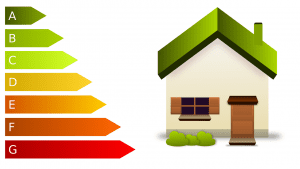 When it comes to preserving energy efficiency in your home, duct sealing with spray foam insulation is often a game-changer. This method addresses a significant source of energy waste – leaky air ducts. The average home loses about 20-30% of the air that moves through the system due to leaks (source), constrictions, and poorly connected ducts. These leaks often stem from gaps and unsealed spaces around the ducts, which is where spray foam comes into play.
When it comes to preserving energy efficiency in your home, duct sealing with spray foam insulation is often a game-changer. This method addresses a significant source of energy waste – leaky air ducts. The average home loses about 20-30% of the air that moves through the system due to leaks (source), constrictions, and poorly connected ducts. These leaks often stem from gaps and unsealed spaces around the ducts, which is where spray foam comes into play.
How Spray Foam Works for Duct Sealing
Spray foam insulation effectively seals these gaps and crevices in air ducts. It expands around the area, forming an airtight seal that prevents conditioned air from escaping and outside air from infiltrating.
Unlike traditional insulating materials, spray foam has a unique ability to conform to irregular surfaces, ensuring complete coverage and sealing even the smallest cracks or openings. This comprehensive coverage helps maintain a consistent temperature throughout the home, minimizing energy loss. Moreover, it significantly reduces strain on your HVAC system by improving its efficiency.
The Impact on Energy Savings
By sealing air ducts with spray foam insulation, homeowners can experience substantial improvements in energy efficiency. According to recent studies, effective duct sealing leads to an average energy savings of up to 18%. These savings result from reduced energy waste and the improved performance of the heating and cooling systems. By preventing heated or cooled air from escaping through leaky ductwork, homeowners experience lower utility bills, translating to long-term cost savings.
Take the case of a couple of homeowners from Minneapolis, who were experiencing uneven temperatures throughout their home along with unusually high energy bills. After a thorough inspection, they discovered that their ductwork was riddled with leaks and gaps. Upon sealing the ducts with spray foam insulation, they noticed a remarkable improvement in the consistency of temperature across different rooms and a noticeable decrease in their monthly energy expenses.
In addition to energy savings, proper duct sealing also enhances indoor comfort by minimizing drafts and temperature variations within the living space. Consistent heating or cooling throughout the home not only elevates comfort levels but also contributes to a healthier indoor environment.
Studies on Energy Efficiency
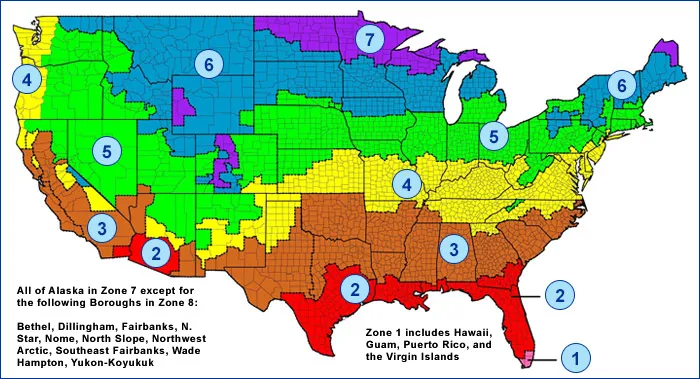
Studies conducted by the Department of Energy have demonstrated that properly sealed and insulated ducts can significantly improve energy efficiency in residential properties. In some cases, it has been reported that Twin Cities homeowners saved as much as 18% on their energy bills after implementing duct sealing with spray foam insulation.
The practice of sealing ducts using spray foam insulation offers tangible and substantial benefits in terms of energy efficiency, reducing household energy consumption while simultaneously fostering a more comfortable indoor living environment for Twin Cities homeowners.
Now that we’ve seen how important it is to regulate airflow within our homes for optimal energy usage let’s explore another vital aspect—how spray foam insulation helps in decreasing air leakage.
Decreasing Air Leakage with Spray Foam
When it comes to maintaining a building’s energy efficiency, one of the key considerations is reducing air leakage. Spray foam insulation excels in this area due to its unique ability to expand and fill even the tiniest gaps and holes that traditional insulation can’t reach. Think of it as being able to cover all the nooks and crannies, leaving no room for air to escape or infiltrate from the outside.
Visualize it this way: when using traditional insulation materials like fiberglass or cellulose, they can’t fully seal off small cracks or tightly fill odd-shaped spaces. This leaves room for air to enter or escape, leading to energy loss and decreased efficiency. In contrast, spray foam insulation expands rapidly, perfectly conforming to any space and effectively sealing off even the smallest openings. This means that outdoor air won’t sneak in, and your conditioned air won’t slip out, resulting in substantial energy savings and a more comfortable indoor environment.
For example, if you have an older home with uneven crevices or unique architectural elements that don’t always fit conventional insulation, spray foam provides a seamless fit that fiberglass or cellulose can’t match.
The value of spray foam’s ability to minimize air leakage doesn’t stop at energy savings. It extends to maintaining a comfortable indoor environment with consistent temperatures, preventing moisture and mold issues due to reduced humidity levels, and improving indoor air quality by minimizing the infiltration of pollutants and allergens from outside.
If we compare this to a leaky bucket—traditional insulation might act like patching up large holes in the bucket but leaving smaller ones untouched whereas spray foam fully seals every hole no matter how small.
This comprehensive sealing also reduces the workload on your heating and cooling systems since they don’t have to constantly make up for lost warm or cool air due to leaks. Furthermore, by efficiently controlling the inflow and outflow of air, spray foam contributes to the longevity of your HVAC system by preventing it from overworking itself.
By understanding how spray foam decreases air leakage and maintains a consistent internal environment while saving you money on energy bills in the process, it becomes clear that choosing spray foam insulation is making an investment not just in your home’s energy efficiency but also in your long-term comfort and well-being.
Understanding how spray foam decreases air leakage and maintains a consistent internal environment is crucial when considering its wider ecological impact. Let’s now delve into this aspect further.
Ecological Impact of Spray Foam Insulation
When it comes to making choices for our homes, we want something that is not only efficient but also eco-friendly. This is where spray foam insulation really shines. It’s about more than just keeping your home cozy in winter and cool in summer; it’s also about making a positive impact on the environment.
Longevity: Spray foam insulation has a very long lifespan, often 50 years or more, reducing the need for additional materials and energy for reinstallation over time for most Minnesota homeowners. This extended lifespan means less waste ends up in landfills, contributing to a more sustainable future.
Consider this: When you insulate your home with other types of insulation, it might not last as long and will need to be replaced sooner. This means more waste being produced over time as old insulation material is disposed of and new materials are installed. With spray foam, you won’t have to worry about that nearly as much.
In addition, the long-term durability of spray foam insulation significantly decreases the energy consumption required for heating and cooling a property. By providing exceptional insulation qualities, it aids in the reduction of heating and cooling demand. This minimized demand translates into lower carbon emissions—a win-win situation for both homeowners and the environment.
Choosing a sustainable option like spray foam insulation over traditional options is not only better for your home but also for the planet. And the best part? You can enjoy these benefits while knowing you’re helping reduce unnecessary waste and pollution.
Overall, the ecological impact of spray foam insulation showcases its long-term durability and potential reduction in energy consumption, effectively lowering the environmental footprint of a property. Making a conscious effort to shift towards sustainable insulation options is an essential step in creating a greener, more environmentally friendly future.
For reliable expertise on maximizing energy efficiency in your property with high-quality spray foam insulation, reach out to Spray Foam Insulation Plus. We proudly provide top-notch services that ensure a comfortable living environment throughout the Twin Cities and beyond while reducing environmental impact.
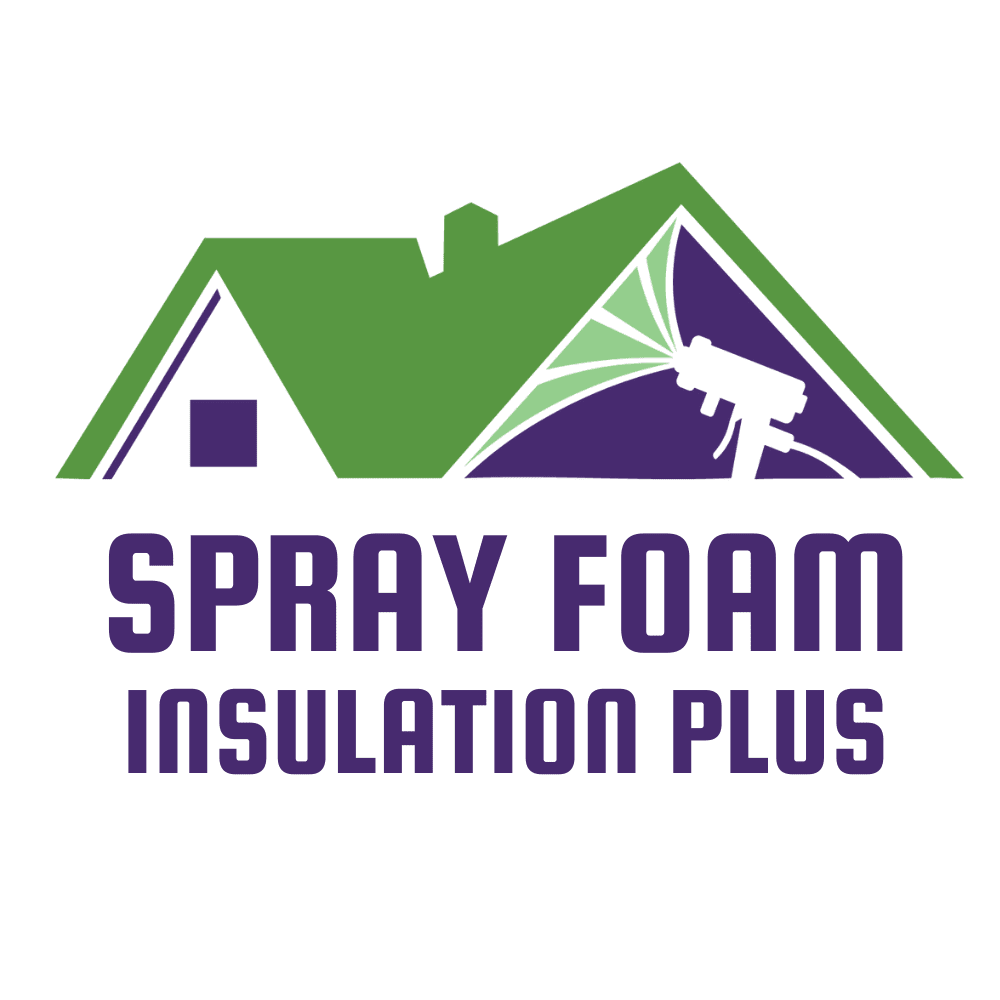
Tags
Preferred Contractors of:
